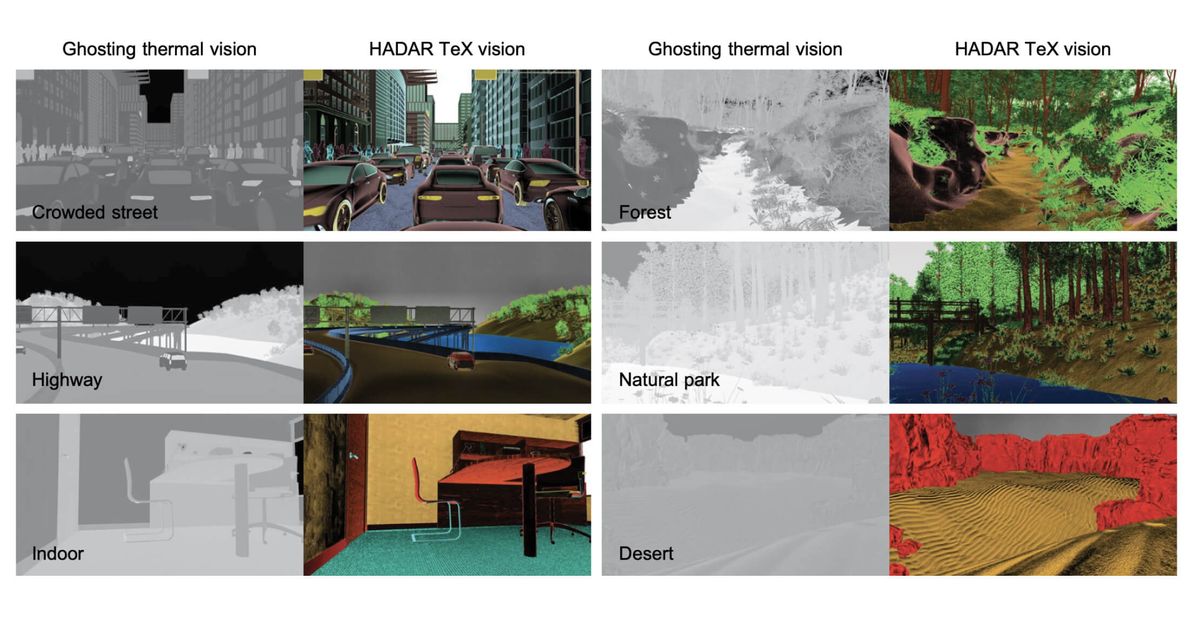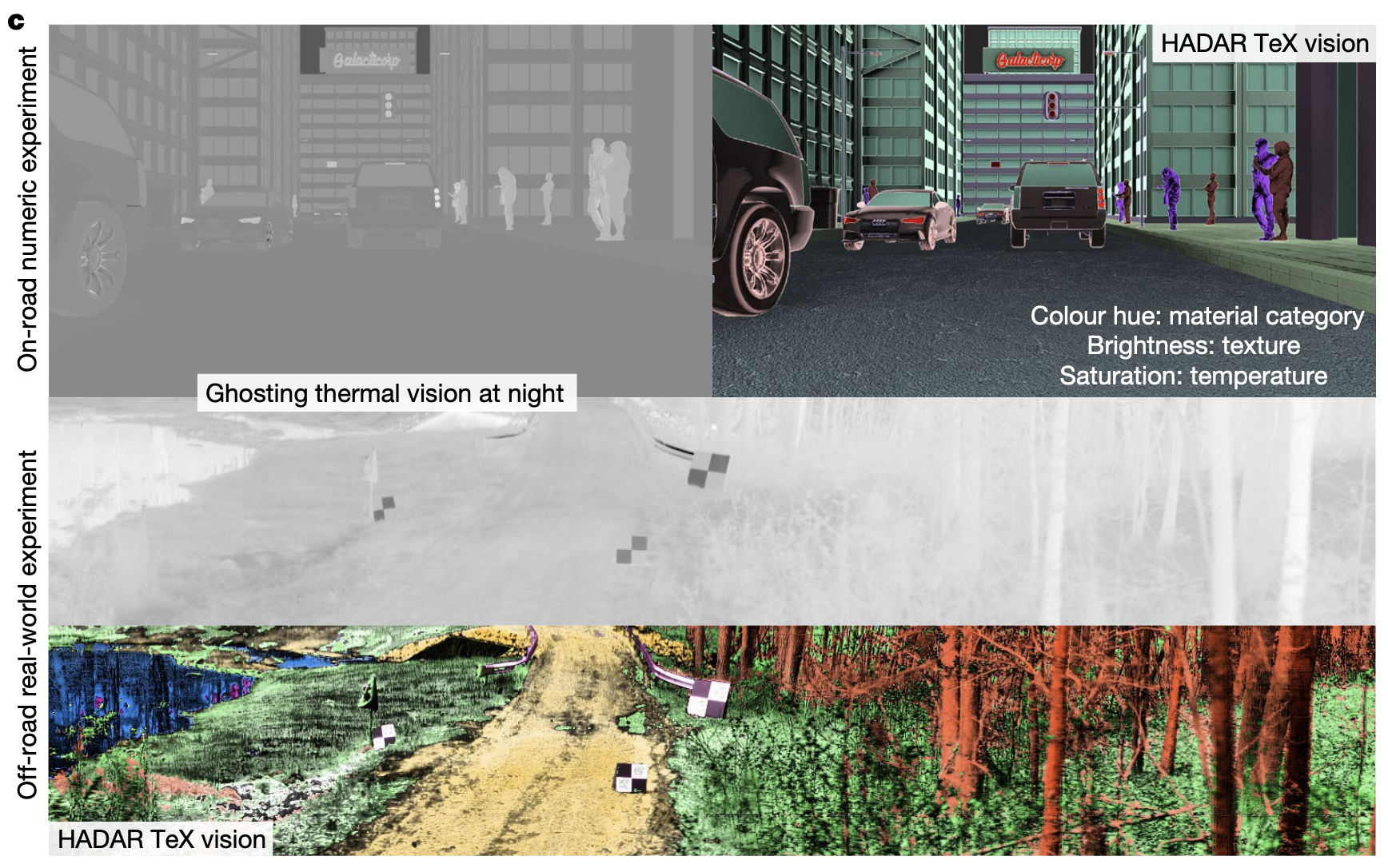
Researchers at Purdue University have developed an innovative new thermal imaging technology that allows AI systems to see through pitch darkness with remarkable clarity and detail—as if illuminated by broad daylight. The patent-pending technology, called heat-assisted detection and ranging (HADAR), dramatically enhances machine vision and perception compared to conventional thermal imaging.
The system hinges on an interesting observation: pitch darkness carries the same amount of information as broad daylight. This observation has led to the development of a technology that can recover texture from cluttered heat signals, accurately disentangling temperature, emissivity, and texture of all objects in a scene. Consequently, HADAR can see through the darkness as if it were day and perceive physical attributes beyond the capabilities of conventional thermal sensing or visible imaging.

HADAR combines thermal physics, infrared imaging, and machine learning to provide fully passive, physics-aware machine perception. It utilizes specialized hyperspectral thermal cameras along with advanced neural networks to process the rich thermal data collected across the infrared spectrum.
It overcomes a fundamental limitation of traditional thermal imaging known as the "ghosting effect", wherein objects and environments appear textureless and indistinct due to the blending of emitted and reflected thermal signals. HADAR's physics-based AI decomposes these signals to reveal vivid textures and physical scene attributes imperceptible in raw thermal data.
"HADAR allows an AI to see not just crude shapes and blobs, but the true detailed form of objects, textures, terrain, and even minute features that are obscured in thermal imaging," explained lead researcher Zubin Jacob.
In demonstrations, HADAR systems were able to visualize fine textures like water ripples, tree bark wrinkles, and subtle ground variations in pitch black settings. The technology was also able to accurately distinguish thin structures, complex shapes, and surface materials that blended together in normal darkness. Researchers say these capabilities enable HADAR-enabled AI agents to safely and reliably navigate, identify objects, and interact in unlit environments where conventional computer vision would fail.

Future improvements to HADAR will focus on reducing the size of the hardware and increasing the data collection speed. The current sensor, while powerful, is large and heavy, and it takes about one second to create one image. For autonomous cars, a frame rate of 30 to 60 hertz is needed, so there is considerable room for improvement.
Potential applications include driverless vehicles, home assistant robots, disaster response drones, and advanced security and surveillance systems. HADAR processing happens automatically, freeing AI agents to operate competently in total darkness. This could make 24/7 autonomy feasible in next-generation smart machines.
The technology also has major implications for infrared thermography and long-range sensing. By recovering surface textures occluded in raw thermal data, the researchers showed HADAR can spot subtle temperature variations otherwise camouflaged. This could enhance applications from predictive maintenance to skin cancer screening. HADAR further demonstrated thermal depth mapping at distances impractical for visible light and radar systems.
Through HADAR's unique fusion of thermal hyperspectral imaging and AI, machines may now reliably see what humans cannot—bringing science fiction-like sensory capabilities closer to reality.

